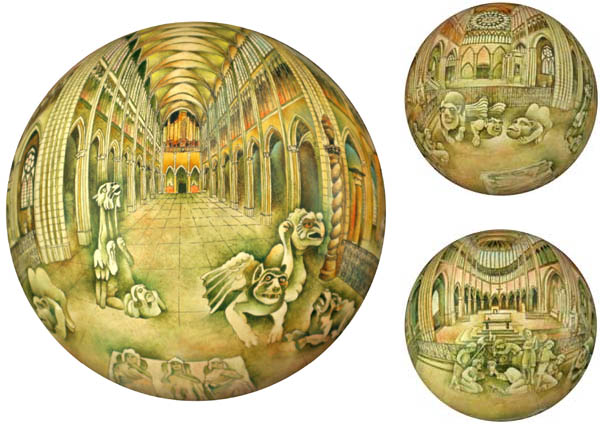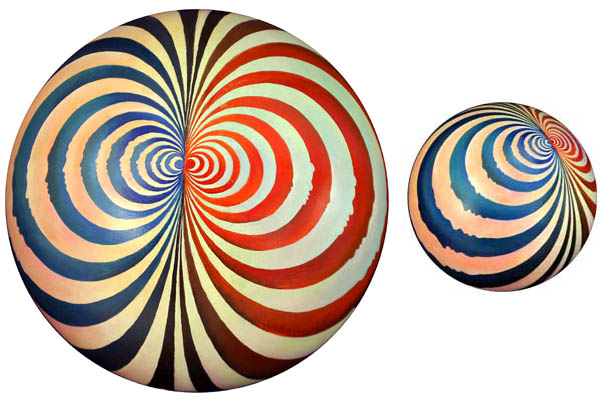Dick A. Termes
Freelance artist
"Much of my art work grows from geometric concepts. When looking at the geometry I like to figure out what human experiences are similar to the geometry. Ideas that come from this process are many times results I don't expect. Another area that is of interest to me is perspective. I use a six point perspective. The six points are equal distant on the sphere or the vertices of the octahedron. This perspective grows from the Renaissance perspective of the past but when it gets to six points and onto the sphere it is much more precise and mathematical than their one and two point perspective of the past. When drawing cubical objects around us, this spherical perspective tightly organizes it. If the cubical space is a cathedral like St Denis in Paris, all the parallel lines go to three sets of points, a north to south and east to west and up to down. Every line drawn is a greater circle. This system shows a wonderful geometry to the visual space around us."
“Gargoyles of St. Denis ”
2005, Permanent pen and Acrylics on a Polyethylene globe, 12" diameter sphere
GARGOYLES OF ST. DENIS uses six point perspective to capture the total interior of the Cathedral on the outside of a sphere. The three sets of parallel lines that create St. Denis are perfect for this system of perspective. I could have stood anywhere within the building and this perspective would wrap it all onto the sphere. I chose this spot so I could see all of the building which is based on the cubical cross. I brought the gargoyles from the outside of the building inside, for fun. This is one of the first Gothic buildings ever built.
“ Magnetic Attractions ”
2005, Acrylics on plastic sphere
,12" diameter sphere

MAGNETIC ATTRACTIONS uses geometry as its beginning. I started with two sets of circles that touch at one edge. Each of these circles have larger and larger circles growing out of them. All of these circles continue to touch at one point. Very quickly one starts to recognize this pattern as a magnetic field. The two circles grow until they meet on the back side of the sphere. To connect this with humanness I added a female into one side of the circles and a male into the other side. They are attracted to each other on the back side. To tie the geometry and the human experience together is important to me.
“ Which Way ”
2003, acrylics on plastic sphere, 12" diameter

WHICH WAY began as a rhombic triacontrahedron on the sphere. I transformed the 60 struts into cubical structures. The diamond shapes became sides of cubes where people and animals could live. When these diamond structures are put together as a cube, some of them become ambiguous cubes. Because some of the sides could be used for two different cubes my subject matter played off of that concept. The children from split families seemed to fit this type of geometry. They also didn't know which way to go.